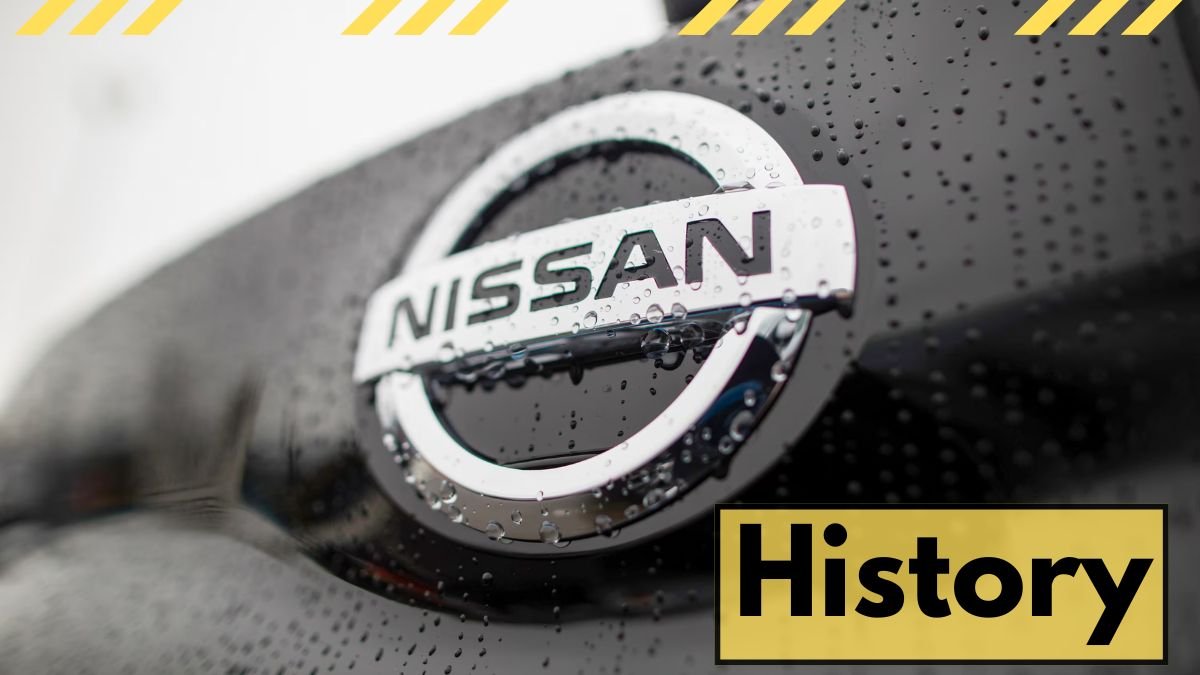Shipping a car can feel like a daunting puzzle, leaving many wondering which service to trust with their prized possession. Whether you’re moving to a new city or just need your vehicle transported for a special trip, choosing the right car shipping provider is essential for a smooth experience. But how do you sift through the myriad of options out there? With various carriers offering different services and price points, it can quickly become overwhelming to figure out who’s reliable and who’s not. That’s why we’ve gathered information on some of the best car shipping services in San Francisco, providing valuable insights into what each one offers, so you can make an informed decision without the stress.
Some reputable car shipping providers in San Francisco include Montway Auto Transport, A1Auto Transport, AmeriFreight, and Ship a Car Direct. Each of these companies is known for their reliability, customer service, and competitive pricing, ensuring that your vehicle will be transported safely and efficiently.
Best Car Shipping Services in San Francisco
Understanding the nuances of car shipping can make all the difference in selecting the right service for your needs. Each of the top-rated providers like Montway Auto Transport, AmeriFreight, and Ship a Car Direct has unique advantages and specific offerings that stand out. For instance, Montway Auto Transport is well-known for its robust network of carriers and proactive customer service. Customers appreciate their easy online tracking system, which keeps them up to date on their vehicle’s journey.
Another factor worth considering is your vehicle type. If you own a luxury or classic car, some companies specialize in enclosed transport options to safeguard high-value vehicles better. This level of protection is especially important during long trips through varying weather conditions. Knowing this beforehand could save you time and protect your investment.
AmeriFreight often comes highly recommended for those seeking affordable rates without compromising quality service. Their money-saving options cater to diverse budgets and situations, such as discount offers for students or active duty military members—a thoughtful touch that resonates with many customers.
Customer experience doesn’t stem solely from pricing; it matters how companies handle issues when they arise. Provider reviews reveal common themes regarding responsiveness to concerns or delays. For instance, some users reported swift resolutions when working with Ship a Car Direct, highlighting their commitment to customer satisfaction even when unexpected challenges come up during transport.
To help you further assess which provider might meet your needs best, here are several key factors to think about:
- Transport method: Open vs. enclosed transport.
- Transit time: How quickly does the company promise delivery?
- Reputation: What are customers saying about their experiences?
- Insurance options: What kind of coverage is offered during transit?
These considerations will guide you in assessing which shipping service not only fits your budget but also aligns with your expectations for care and reliability while transporting your car. Looking closely at the costs involved and the available options will provide additional clarity moving forward.
Cost Comparison and Options
Shipping costs can indeed vary widely based on several factors that you’ll want to keep in mind. For instance, the distance your vehicle must travel plays a crucial role; a short local transport will likely be cheaper than a cross-country move. Additionally, the size and type of your vehicle impact pricing—larger vehicles like SUVs or trucks will generally cost more to ship compared to smaller cars.
To illustrate further, consider this: transporting an everyday sedan over a relatively short distance might cost around $600 for standard open transport. However, if you’re looking at a luxurious convertible heading across the country to a sunny Los Angeles beach, that same journey in an enclosed trailer could elevate costs to about $1,500. While it’s tempting to choose the budget-friendly open transport for all vehicles, it’s wise to consider the potential risk of weather damage or road debris.
Breakdown of Shipping Options
When it comes to car shipping, there are several key options you can consider that cater to different needs:
Open Transport is typically less expensive and suitable for everyday vehicles. Picture a truck with multiple cars loaded on top—this is common for standard models. However, if your car has special characteristics or value, you may want to look at what’s next.
Enclosed Transport is where you might invest a little extra but offers superior protection for luxury or classic vehicles. The idea of putting your prized possession in a fully covered trailer can provide peace of mind, especially for those who want to ensure every bit of its beauty arrives intact.
- Open Transport: Generally cheaper and works well for everyday cars.
- Enclosed Transport: More expensive but offers excellent protection for high-value vehicles.
- Door-to-Door Shipping: Incredibly convenient as it allows pickup and delivery right from your home, though this convenience typically incurs additional charges.
- Terminal-to-Terminal Shipping: A more economical option where you drop off and pick up your vehicle at specific locations, making it easier on the wallet but requiring some additional planning on your end.
By carefully evaluating these options based on your specific needs and budget constraints, you’re poised to navigate the process of shipping your vehicle with confidence as we move into understanding the detailed steps involved in this journey.
Step-by-Step Shipping Guide

The journey to successfully shipping your car begins with thorough research and careful planning, which can make the entire experience smoother. The first step involves exploring various car shipping providers. This is not merely about picking the first name on a search engine; you should scrutinize each company’s reputation through online reviews and ratings. Look for specialist services that match your specific needs, whether you’re considering an open carrier or an enclosed shipping option for luxury vehicles.
Comparison tables are exceptionally useful here as they can visually lay out the differences in price and services offered. This helps save you time and effort.
Once you’ve narrowed down your options, it’s time to gather information from potential providers and solidify your choice.
The next step is to get quotes and book your shipping. Reach out to at least three to five providers. This not only helps you get a range of prices but also gives you a sense of their customer service. Each quote should detail costs, estimated delivery times, and any additional fees that could suddenly appear. After reviewing these details, select the provider that best meets your budget while considering their reliability. Being proactive now pays off later when you want smooth sailing during the actual transport phase.
After booking your car’s transport, there’s essential groundwork to cover before handing over your vehicle.
Preparing your vehicle for shipment is critical. Start by giving it a good clean inside and out; this allows you to spot any pre-existing damages more easily. Remove personal belongings—most companies advise against having personal items in the vehicle due to liability reasons. Additionally, take photographs of your car from several angles; these images will serve as a record if any disputes arise later regarding damage. Lastly, ensure that your gas tank is about a quarter full; this minimizes weight while providing enough fuel for loading and unloading.
With everything set and ready on your end, it’s time for the actual pickup.
When your car is picked up, both you and the driver should conduct a comprehensive inspection together. This is where those photos come in handy: compare what was documented with the current condition of the vehicle. Any pre-existing damages noted during this process should be recorded on the shipping paperwork to address possible claims later on.
Now comes the waiting game as you anticipate your vehicle’s arrival.
During transit, many companies provide tracking options that allow you to follow your car’s journey in real-time. This feature brings peace of mind as you can stay informed about expected delivery dates or potential delays caused by weather or traffic issues along the route. Once your vehicle arrives at its destination, perform another inspection before signing off on its delivery. Make sure there are no new damages incurred during transportation—it’s always wise to double-check against your original photos.
By familiarizing yourself with these key steps, you’re setting yourself up for success in navigating this process seamlessly as we turn our focus to what others have experienced firsthand.
Real Customer Reviews
Access to genuine customer reviews can be a game changer when selecting a car shipping provider in San Francisco. These testimonials deliver real-world feedback that encapsulates the highs and lows of each service. For instance, Jane T. from San Francisco shares, “I’ve shipped my car with Montway twice. Both times, they delivered on time and in perfect condition. Their customer support was incredible from start to finish.” This kind of positive affirmation reflects reliability and attention to detail.
However, not every experience is flawless, as demonstrated by Sam P., who acknowledged a minor delay in delivery with AmeriFreight. What stands out in his review is his appreciation for transparency. He mentioned how their constant updates kept him informed throughout the process, which is crucial during such an important service like car shipping.
It’s clear that both commendations and criticisms reveal not only the quality of the service but also the responsiveness of the company towards issues that arise.
Additionally, looking for common themes or repeated concerns across various reviews can offer invaluable insights into a provider’s performance. For example, if multiple customers mention delays but praise customer service, it indicates that while punctuality may be an issue, the company knows how to handle communication well—an essential factor when dealing with logistics.
Here are some quick tips for evaluating customer reviews:
- Look for Detailed Accounts: Authentic reviews usually go deep into specific aspects of the service.
- Balance Positive With Negative: One-off glowing reviews can be suspicious; check for balanced feedback.
- Check Dates: Recent reviews reflect current practices and policies, ensuring you get an accurate picture.
- Consider Service Scope: Some reviewers may have different needs—such as domestic versus international shipping—so evaluate experiences that relate closely to yours.
By carefully analyzing these customer testimonials alongside your own shipping needs, you’ll be better positioned to navigate the selection process and find a provider who meets your requirements effectively.
Evaluating Service Reliability
When it comes to car shipping, understanding service reliability is crucial in providing peace of mind. First and foremost, it’s vital to consider the company’s history with timely deliveries. A smooth transportation process should not only involve your car arriving on time but also maintaining its condition during the journey. As indicated by the 2024 survey from Transport Reviews, Montway Auto Transport led the charge, with an impressive 92% of customers reporting prompt deliveries. In comparison, AmeriFreight and Ship a Car Direct also performed well with 89% and 87%, respectively.
Yet reliability extends beyond mere delivery times; it encompasses consistent customer service and effective problem resolution. Picture this: you’ve entrusted your vehicle to a shipping company, only for unforeseen complications to arise—maybe a delay or damage. How a company responds in those moments defines its reliability. Will they communicate effectively? Are they equipped to handle your concerns promptly? These are pivotal factors that can make or break your overall experience.
Another key point to consider while evaluating a company’s reliability is their communication channels. Do they offer clear avenues for reaching out, such as phone support, live chat, or email? Companies that prioritize transparent communication tend to inspire more trust. You should feel empowered to ask questions without hesitation. The best services will not only answer promptly but also provide solutions—this showcases their commitment to client satisfaction.
A company’s past reviews are invaluable in gauging service reliability as well.
Analyzing previous customer experiences sheds light on what you may expect from a service provider. Look for patterns among reviews—do customers consistently commend the company’s communication? Are there red flags regarding delivery issues? Seek testimonials that mention how the company handles hiccups along the way, as this will give you greater insight into their demeanor when things do not go as planned.
By honing in on these vital aspects as you compare different shipping providers, you’ll be better equipped to navigate the complexities of transporting your vehicle safely and effectively. With all this knowledge in hand, we can now explore strategies for ensuring everything goes smoothly during the shipping process.
Tips for a Smooth Shipping Experience

Valuable insights can make the shipping process smoother and easier to manage. One fundamental recommendation is ensuring clear communication with your chosen shipping provider. This means confirming your pickup and delivery addresses and clearly identifying contact points for both you and any delivery personnel. A miscommunication — even something as simple as a wrong zip code — can complicate an otherwise smooth process. It’s always wise to double-check everything!
Additionally, understanding your insurance coverage is critical. Different companies offer varying levels of protection against potential damages during transit. Familiarize yourself with what the coverage entails and how to navigate the claims process should the unexpected happen. No one wants to deal with issues post-shipment, so it’s best to prepare upfront.
Another aspect worth considering is timing. Scheduling your shipment during less busy seasons, like late fall to winter, could significantly reduce your wait times and save you money. Companies often see a drop in demand during these months, which may lead to better rates or more flexibility in scheduling. Planning around holiday seasons—or avoiding them—can be a game-changer.
Furthermore, the use of online tracking tools can enhance your overall experience. Most reputable car shipping providers enable you to track your vehicle throughout its journey, providing peace of mind while also allowing you to stay informed about any unforeseen delays or issues. It’s as easy as checking an app or website to keep tabs on your car’s status.
Lastly, remain in regular touch with your provider throughout the process. You never know when there might be a change in logistics or something else that might need addressing. A little proactive communication goes a long way in preventing misunderstandings down the road.
Keeping these tips in mind will not only prepare you for successful vehicle transport but also help minimize stress as you transition to whatever awaits you at your new destination.
In summary, effective communication, understanding insurance options, timing your shipment wisely, utilizing tracking tools, and remaining engaged with your provider are all essential components of a smooth car shipping experience.



